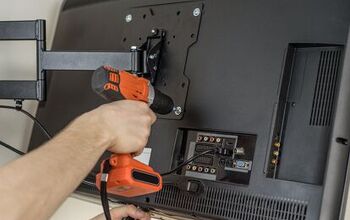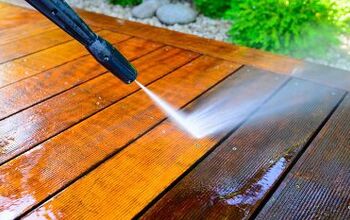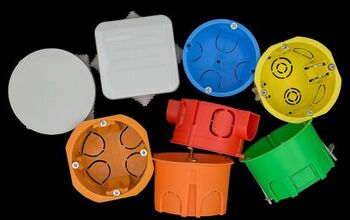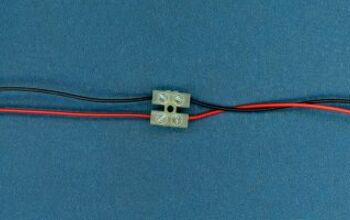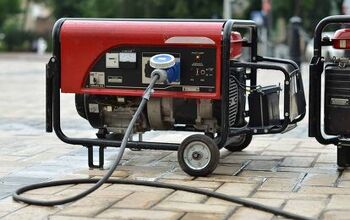Cost To Drill A Well [Pricing Per Foot & Cost By State]

Whether you’re wanting to save money on your water bill or keep your lawn watered without breaking the bank—drilling a well is an excellent option for you. While you will incur some costs, you will save a lot in the long run. So, how much does it cost to drill a well?
It will cost you approximately $5,500 to drill a well to the average depth of 150 feet. However, you may find yourself paying between $1,500 to $12,000 depending on the terrain, and how deep the well is. It’s usually $15 to $30 per foot of depth and $50 per foot for rugged terrain.
Digging a well is not for everyone. Of course, if you hire a professional, you will pay a higher price. This guide will walk you through the costs of each scenario, so you know what to expect as far as cost goes when drilling or digging a well.
Related Content: Do You Need A Permit To Drill A Well? | How Long Does It Take For A Water Well To Refill? | Pros And Cons Of Well Water
Do You Need a Well Constructed or Rebuilt?
Get free, zero-commitment quotes from pro contractors near you.

What is a Well?
In the simplest terms, a well is a hole that is drilled into the ground to provide access to water. A pump and pipe system are used to pull the water from the ground, which then goes through a screen to filter out any unwanted particles and prevents clogs. Since groundwater sources are highly susceptible to exposure to chemicals and bacteria, wells can become contaminated when they’re built improperly.
Every well is commonly made up the following four components:
- Casing: This component maintains open access in the ground, while also preventing leaks into the well from the surrounding area. It is commonly made of PVC pipe, concrete pipe, or steel.
- Grout: This refers to the sealant that fills any spaces or cracks around the exterior of the well, which prevents contaminants from getting inside.
- Filter screen: The filter screen is either made of slotted PVC pipe or stainless steel. Its purpose is to keep sand, gravel, dirt, and other debris out of the well.
- Gravel: Gravel is placed around the exterior of the filter screen to further prevent debris from getting into the well, but also from clogging the screen itself.
Average Costs Per Foot Of Well Drilling & Digging
Well Drilling Cost Per Foot | |
Type | Average Price Per Foot |
Artesian Well | $35 – $85 |
Geothermal Well | $15 -$40 |
Digging- 3″ to 4″ well- 25′ | $10 – $25 |
4″ Residential Water Well | $25 – $40 |
6″ Residential Water Well | $30 – $65 |
8″ Residential Water Well | $60 – $100 |
Irrigation or Agricultural Well | $50 – $100 |
Typically, it will cost between $10 to $25 per square foot to dig a well, compared to $15 to $30 if it is drilled. These estimates are exclusive of costs for equipment or extra work.
Digging is most often undertaken when the hole is shallow, and the soils are easy to penetrate. However, digging isn’t adequate for depths of 100 feet or more. With heavy or rocky soil, the ground may need to be drilled, no matter the depth. To drill a well, it costs between $15 to $25 per foot.
Residential Water Wells
Typically residential projects cost less than commercial or agricultural ones, with a basic cost between $15 and $25 per square foot, before installation. Small-scale wells are not as tightly regulated as the larger systems we consider below.
Drilling a small well is uncomplicated. After boring, it is cased and linked up to your water lines. Deeper excavations may need a selection of drill attachments to deal with various rocks and types of earth. Most professionals include multiple drill bits in their initial estimates. Casing and the water line connection will also increase expenses.
Irrigation And Agricultural Wells
For agricultural and commercial wells, the price per foot will range between $35 and $55. These costs are for drilling only but do include a premium for the greater complexity of the project. To account for the greater volume required, boreholes need to be wider and deeper.
Regulations concerning water quality differ from state to state. They can be very stringent and may require additional purification equipment and other precautions.
Artesian Wells
Artesian well systems make use of the layers of rock, which keep water under pressure. When the well reduces that pressure, the liquid will naturally rise. Expect to pay between $35 and $85 per foot.
The initial high expense of an artesian well installation will be recovered over time by the lower operating and maintenance costs. The results are similar to drilling at residential and commercial locations, but artesian wells need to be correctly positioned and excavated carefully.
Geothermal Well Digging Cost
Geothermal wells cost $20 to $40 per square foot to drill the initial shaft, which has to be a minimum depth of 150 feet. A specially designed geothermal rig will then be needed to extract geothermal energy.
The total cost of installing a geothermal heating system in a home will typically cost between $3,500 and $12,500. As an estimate, you can calculate that for every 500 square feet of your property, a well-depth of 200 feet will be required to heat it. For homes of over 1,000 square feet, two wells may be required.
Cost To Drill A Well Deeper
To increase the volume of water from an existing well, or improve the heat generated from the well, you could look into deepening it. The price per square foot is in the same range as those described above. Depending on how much additional depth you require, your project could be completed by a professional in just a day, costing between $300 and $600 in labor, plus additional charges for materials.
The Drilling Process & Breakdown of All Costs
Water Well Costs & New System Installation
The typical cost between $1,500 and $12,000 becomes understandable when broken down into its components. The drilling is only one part of the process, and it’s essential to consider all the other steps.
Cost Estimates Of Water Well | |||
Appliance/Material | Cost | Labor Price | Purpose |
Casing Pipe | $630 – $2,400 | $200 – $600 | Protects well walls to prevent contamination |
Pressure Storage Tank | $1,200 – $2,400 | $200 – $500 | Storage for pumped water |
Pressure Switch/Electrical Wiring | $50 – $150 | $160 – $500 | Operates the pump |
Water Heater | $730 – $1,400 | $270 – $520 | Heats the water |
$800 – $2,600 | $200 – $400 | Keeps the water clean | |
Well Pump | $100 – $1,200 | $50 – $200 | Pumps groundwater to the surface |
Other possible water heater choices:
- Tankless heater: $900-$2,700
- Solar heater: $2,000-$5,300
Estimate Cost of Putting In An Irrigation Water Well
Residential irrigation systems cost between $5,000 and $12,000, with agricultural projects usually being more expensive. When large-scale drilling is needed, the price can rise as high as $75,000.
Irrigation Well Cost Estimate | ||
Material/Appliance | Unit | Labor |
Casing Pipe | $630 – $2,400 | $200 – $600 |
Pressure Storage Tank | $1,400 – $2,400 | $200 – $500 |
$50 – $150 | $160 – $500 | |
Well Pump | $300 – $1,200 | $50 – $200 |
Artesian Well Drilling
Total cost will vary from $4,000 to $10,000. The drilling process is more complicated and needs careful planning, but an electric pump won’t be required to draw water.
Artesian Well Cost Estimate | ||
Material/Appliance | Unit | Labor |
Casing Pipe | $630 – $2,400 | $200 – $600 |
Pressure Storage Tank | $1,400 – $2,400 | $200 – $500 |
Water Heater | $730 – $5,300 | $270 – $520 |
Water Treatment/Purification | $800 – $2,600 | $200 – $400 |
Sand Point Well
A sand point well is cheaper than the alternatives, costing from $200 to around $1,500. However, what you gain in saving with this hand-powered option, you lose in reliability. It’s not suitable for commercial irrigation or if you need a regular water supply, but adequate when water is only required intermittently.
Sand Point Well Cost Estimate | ||
Material/Appliance | Unit | Labor |
Hand Pump | $150 – $500 | $50 – $150 |
Small Water Tank | $700 – $1,500 | $150 – $340 |
Well Cost By State
With costs varying from $1,500 to $12,000, it’s clear that many factors play a part in the total expenses of your project:
- Location of the well
- How deep it is
- How far from your home
- The volume of water supply
- The terrain
- Government permits,
- Water quality testing
- And More
Below is a chart that reflects the estimated cost of drilling a well by state.
Well Drilling Cost By State | |
State | Price (Per Foot) |
Alabama | $27 – $59 |
Alaska | $34 – $75 |
Arizona | $27 – $58 |
Arkansas | $26 – $57 |
California | $30 – $65 |
Colorado | $28 – $62 |
Connecticut | $30 – $66 |
Delaware | $29 – $63 |
District of Columbia | $31 – $69 |
Florida | $26 – $58 |
Georgia | $27 – $59 |
Hawaii | $33 – $73 |
Idaho | $25 – $55 |
Illinois | $29 – $63 |
Indiana | $27 – $59 |
Iowa | $27 – $59 |
Kansas | $28 – $61 |
Kentucky | $27 – $59 |
Louisiana | $28 – $61 |
Maine | $27 – $58 |
Maryland | $29 – $62 |
Massachusetts | $31 – $69 |
Michigan | $28 – $62 |
Minnesota | $28 – $61 |
Mississippi | $26 – $58 |
Missouri | $27 – $59 |
Montana | $27 – $59 |
Nebraska | $26 – $56 |
Nevada | $28 – $62 |
New Hampshire | $28 – $61 |
New Jersey | $30 – $67 |
New Mexico | $26 – $56 |
New York | $30 – $65 |
North Carolina | $27 – $59 |
North Dakota | $29 – $64 |
Ohio | $28 – $61 |
Oklahoma | $27 – $58 |
Pennsylvania | $28 – $61 |
Rhode Island | $29 – $64 |
South Carolina | $28 – $61 |
South Dakota | $26 – $58 |
Tennessee | $27 – $60 |
Texas | $28 – $62 |
Utah | $27 – $59 |
Vermont | $27 – $58 |
Virginia | $27 – $59 |
Washington | $28 – $61 |
West Virginia | $27 – $58 |
Wisconsin | $28 – $61 |
Wyoming | $28 – $61 |
Shallow Wells vs. Deep Wells
Most cost estimates depend on depth, which is the most crucial variable. Typically, projects drill within a range of 100 and 400 feet. However, if your groundwater is near the surface, a depth of as little as 25 feet may be required.
As water from shallow sources is polluted more quickly, the depth required is often subject to local regulations. Consult an expert to define the perfect depth for your location and needs.
Additional Cost Factors To Consider
Other Considerations | |
Factor | Price |
Permits | $5 – $500 |
Distance to House | $50 – $150 |
Water Testing | $30 – $150 |
Permits
Fees for permits vary from county to county. This unavoidable cost can range from as little as $5 and up to $500. If you start digging without the required permits in place, you risk incurring legal penalties and associated costs.
Some counties charge different prices for residential and irrigation permits. The best thing is to work with an experienced professional contractor who will ensure you get the correct paperwork in place.
Distance To House
If you can locate your well nearer to your home, this will reduce costs. Waterlines and electricity supply lines can be shorter. Using the average cost of installing a water main as a baseline, you’ll save between $50 and $150 on piping for every foot that you move the well closer to your home.
Water Testing
If you hire a professional to carry out water testing, expect to pay between $100 and $500. To reduce costs, you could use a DIY kit, costing between $30 and $150. This is a vital first step: you need to make sure your water is safe and uncontaminated.
Professionals tend to include testing in the cost of their first site inspection. Samples are sent to a lab for comprehensive analysis. With a DIY kit, the results will appear instantly, but may not be as safe.
How Much Does it Cost to Put in a Well And Septic System?
A septic system disposes of wastewater safely. It is obligatory if you live off the grid. A well provides clean water, and the septic system disposes of it. The underground tank and soil absorption system are the most significant factors affecting cost.
The installation of a septic system varies between $2,800 and $8,000. The average cost is around $5,000. The total expenses for well and septic system drilling, plus installation, will be between $5,000 and $22,500. You need to know that some well installation professionals will also drill and install septic systems.
Private Well vs. Municipal Water System
A private well can save money over time. The only running cost is the monthly payment to operate the pump. However, annual maintenance will cost around $100 to $250.
Based on an average usage of 12,000 gallons each month, you’ll save up to $500 per year with a private well. Even your water usage in a given month is more significant, and your expenses will not increase as much as they would for a municipal water bill.
However, as septic tanks and wells get older, their expenses increase. In 20-30 years, it will typically cost around $10,000 to replace your water tank, pump, and the rest.
Types Of Well Drilling
Dug/Bored wells are shafts dug with shovels or backhoes. To prevent collapse, they are lined or cased with stones, bricks, tiles, or other products. Dug wells to have a wide diameter, are usually a depth of 10 to 30 feet. They are not wholly cased.
On the other hand, driven wells are made when a pipe is pushed into the ground. They are shallow, at 30-50 feet deep and cased continuously. Despite their casing, they are prone to contamination as they take water from shallow aquifers, rather than deep underground.
Finally, the most common type is drilled wells are formed by percussion or rotary-drilling equipment. They can go to depths of thousands of feet and require continuous casing. They are at least a risk of contamination.
Hire A Pro vs. Drill Your Own Well
In theory, you can drill a well without using a contractor. Before starting a DIY installation, consider how much you’ll pay for materials and equipment:
- Drill Rig Rental: $600-$800 per day.
- Casing, Pipes, and Tubes: $50-$150 per foot of depth.
- Other items mentioned above will all need to be factored into your costs—permits, pumps, and the water tank all cost extra. You may need to pay for additional labor.
However, hiring a professional means you can have confidence that the installation has been done correctly and that the cost estimate is more accurate. A well-done job saves on repair and maintenance expenses over time. It makes sense to get different quotes, so you’ll understand precisely what is needed and each item’s likely cost.
Do You Need a Well Constructed or Rebuilt?
Get free, zero-commitment quotes from pro contractors near you.

Related Questions
How deep should a well be for drinking water?
Dug wells, usually between 10 and 30 feet deep, are the most subject to pollution by agricultural, industrial, or urban sites in the area. Driven wells are far deeper and draw water from the saturated zone.
What is the difference between a borehole and a well-point?
A well-point is a polyethylene pipe with a filtered end installed into porous soil. A borehole is drilled to depths of more than 20 meters. It has a large diameter casing, which enables a submersible pump to be installed.
Can I drill a well on my own property?
In most cases, you can drill your own well on your own property. However, before you do so, you should always consult your local building department to find out if there are any specific regulations that should be followed. There are also some cities and states that will still charge you for the water that is pulled from your land, even if you are doing the pulling.
How close to a house does a well need to be?
As a general rule of thumb, personal drinking water wells should be at least 10 feet from your property line. This means that your well and your neighbor’s well are at least 20 feet apart. Though, the standards may vary based on your state or local jurisdiction.

Heather is a passionate writer who loves anything DIY. Growing up, she learned everything from home repairs to design, and wants to share her tips with you. When she's not writing, she's usually hiking or searching for her next DIY project.
More by Heather Robbins



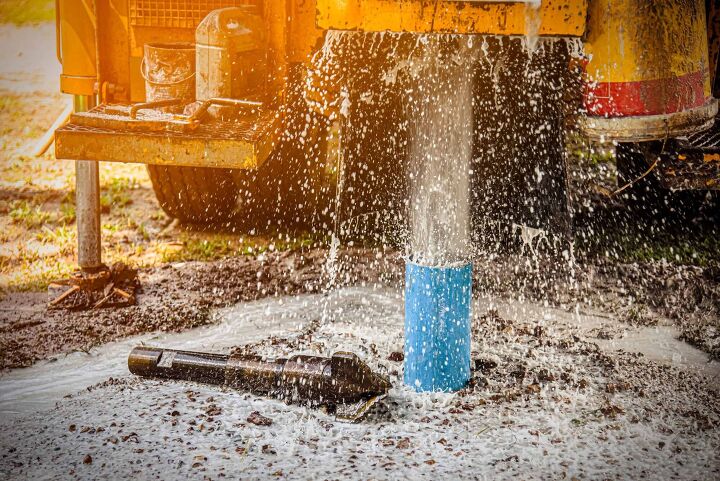






![How Much Does A Vinyl Fence Cost? [Pricing Per Linear Foot]](https://cdn-fastly.upgradedhome.com/media/2023/07/31/9077200/how-much-does-a-vinyl-fence-cost-pricing-per-linear-foot.jpg?size=350x220)
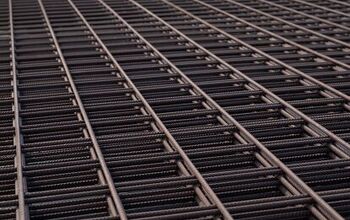
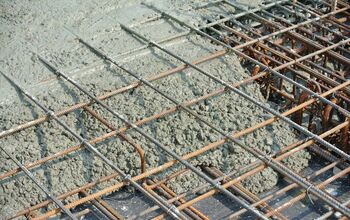
![How Much Does Mudjacking Cost? [Price Per Square Foot]](https://cdn-fastly.upgradedhome.com/media/2023/07/31/9075064/how-much-does-mudjacking-cost-price-per-square-foot.jpg?size=350x220)
![Bathtub Replacement Cost [Per Square Foot Pricing]](https://cdn-fastly.upgradedhome.com/media/2023/07/31/9074407/bathtub-replacement-cost-per-square-foot-pricing.jpg?size=350x220)




